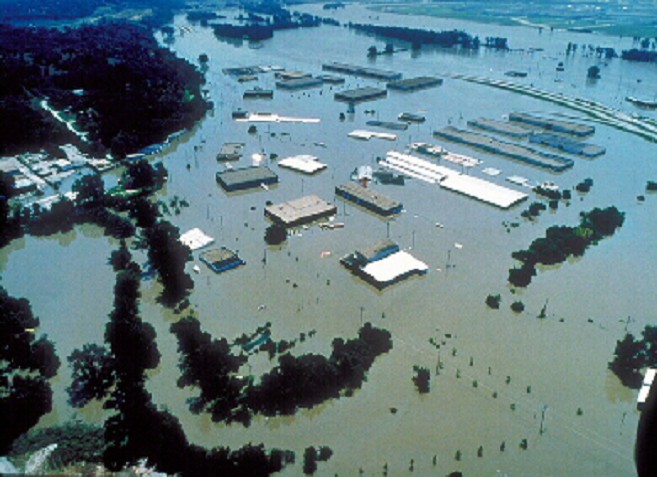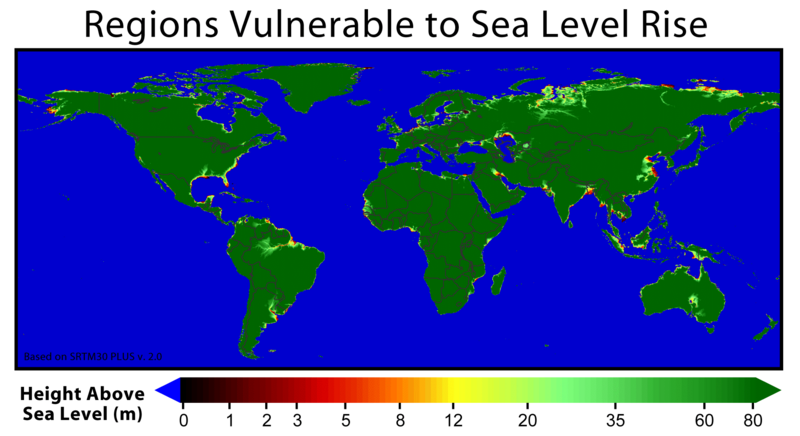Global warming has already begun to impact our sea levels, and is projected to have an impact in the future. According to the fourth assessment report of the IPCC, the sea-level is predicted to rise between .5 and 1.2m by 2100. Further evidence has predicted an accelerated increase in sea levels due to feedback loops like moulins, for example.
The sea level rise is due to melting of continental ice sheets. It is important to differentiate between sea ice and continental ice. Sea i ce, on the contrary to continental ice, does not contribute to changes in sea–level, just as ice melting in a cup of water would not raise the waterline. Continental ice, on the other hand, adds water into the sea.
ce, on the contrary to continental ice, does not contribute to changes in sea–level, just as ice melting in a cup of water would not raise the waterline. Continental ice, on the other hand, adds water into the sea.
The result of further melting of continental ice sheets could be catastrophic. 10% of the world population lives within 10m of sea-level. For other places in the world, the percentage of people within 10m of sea-level is even greater. For example, in Bangladesh, 50% of the population would be submerged in water with a 10m rise in sea-level.
Click here to watch a visual of the sea level rising across the world as temperature increases–> Sea Level Rise
Scientists specifically are concerned with the Greenland and Antarctic continental ice sheets. Why are they concerned, and how realistic are their concerns?
• Melting of the Greenland ice sheet would result in a 6m sea-level rise, submerging most of NYC and Boston.
• Melting of the Greenland ice sheet is already underway
• Unexpected feedback loops may contribute to faster melting of the ice sheets than predicted
• A 5 degrees Celsius rise in temperature would result in partial melting of the Greenland and west Antarctic ice sheets, which would lead to a rise in sea-level of 5-11m.
oThat could wipe out 10% of the world’s population!
Even the predicted sea-level rise of 1m by 2100 would submerge 4,000,000 North Americans with a total of 145,000,000 of the global population. It is clear that continental ice sheet melting is already underway and we must act now in preparation for the sea-level rise.
Mann and Kump outline three stages for adaptation to prepare for rises in the sea-level:
1. Protection through engineering. i.e. building dykes
2. Accommodation inundation. i.e. building flood proof houses
3. And the final stage- coastal retreat. i.e. building sea walls and/or evacuation of regions
Since major civilizations are settled around vulnerable coastal areas, sea level rising poses a threat to humanity, culture, and history. Both mitigation and adaptation will be necessary to combat the potential disasters caused by global warming.
Tags: climate change, floods, Grace Lange, human-induced, mitigation, Sea level rise
